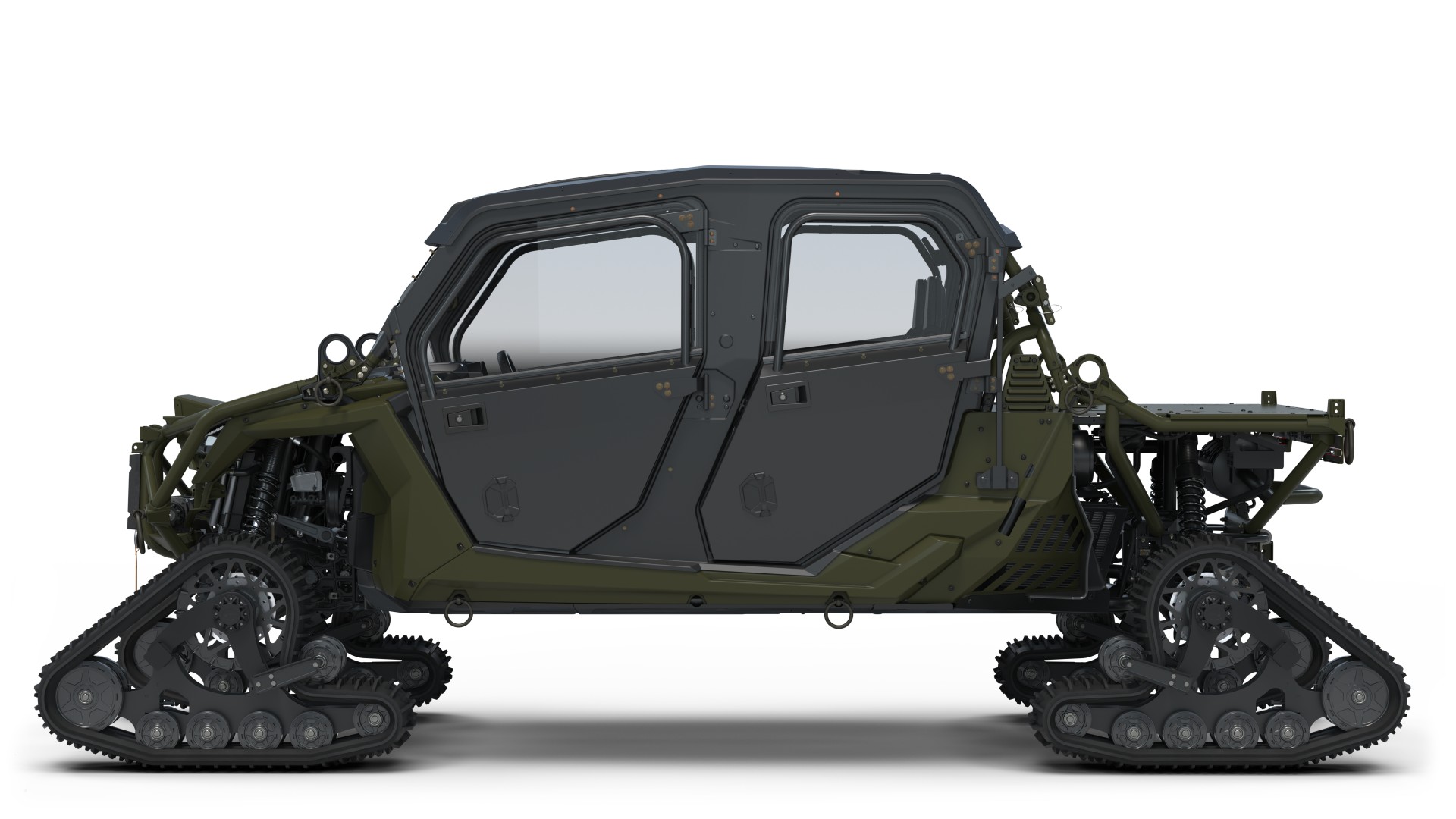U.S. special forces are testing a new vehicle designed for Arctic conditions
The MRZR Alpha, an all-terrain special forces vehicle, is being adapted for use in the Arctic by Polaris.

U.S. special forces could see a new Arctic-adapted vehicle as soon as early 2023.
The MRZR Alpha, an all-terrain vehicle to be used by U.S. Special Operations Command, is being adapted for use in the Arctic with snow tracks and an enclosed, heated cab.
A $109 million contract was awarded to Polaris in June 2020 to create two- and four-passenger vehicles with seven kits or “packages,” including an Arctic mobility package, to adapt them to different surroundings.
“Designing a vehicle to operate in an Arctic environment poses some unique challenges,” John LaFata, the lead engineer of the MRZR Alpha, told ArcticToday in an email.
This kit includes tracks that replace the buggy’s wheels to traverse the snow-covered ground.
“Tracks replace the wheels on the MRZR Alpha to provide greater mobility in the challenging terrains seen in Arctic conditions,” LaFata said.
A cab enclosure, including doors and windows, would also protect occupants from harsh conditions. “To optimize the seal on that cab, we designed a side panel so the roof, front and rear panels and doors can more efficiently come together,” LaFata said.
There’s an engine block heater and battery warmer, and floor vents will release some heat while the doors have vents to circulate air out.
“Frost buildup is another challenge unique to colder climates and we address that with a defroster system to provide heat to the windshield and a sprayer/wiper system that also helps clear debris,” he said.
The MRZR Alpha could have the capacity for lasers and drones, as well as for medical evacuation. It’s lightweight and can be carried on aircraft and helicopters, designed to reach inaccessible areas quickly.
Tracked version of Polaris’ MRZR Alpha at #ModernDayMarine, part of the vehicle’s Arctic mobility kit pic.twitter.com/BIgVzy1Mgm
— Matt Beinart (@MBeinart22) May 10, 2022
A prototype was shown at an expo for U.S. Marines in Washington, D.C., in mid-May. The vehicles are now undergoing testing, which takes three to six months. Special operations command would then decide whether to buy the kits.
Special forces currently use snowmobiles in Arctic conditions, but these vehicles would be more protective from the elements and allow for more passengers.
Other military services could also put vehicles like these to use. The U.S. Army is interested in new all-terrain vehicles suitable for Arctic conditions, and two industry teams are now competing to build such a vehicle, according to The Drive.
Part of the appeal of the MRZR Alpha is its modular design, if it proves effective.
“If you can have one vehicle perform in the desert, and then modify that vehicle quickly within two to three hours, and then have it perform in the Arctic environment, you’re able to do more with one asset,” Nick Francis, Polaris’ vice president for government and defense, told Defense News.